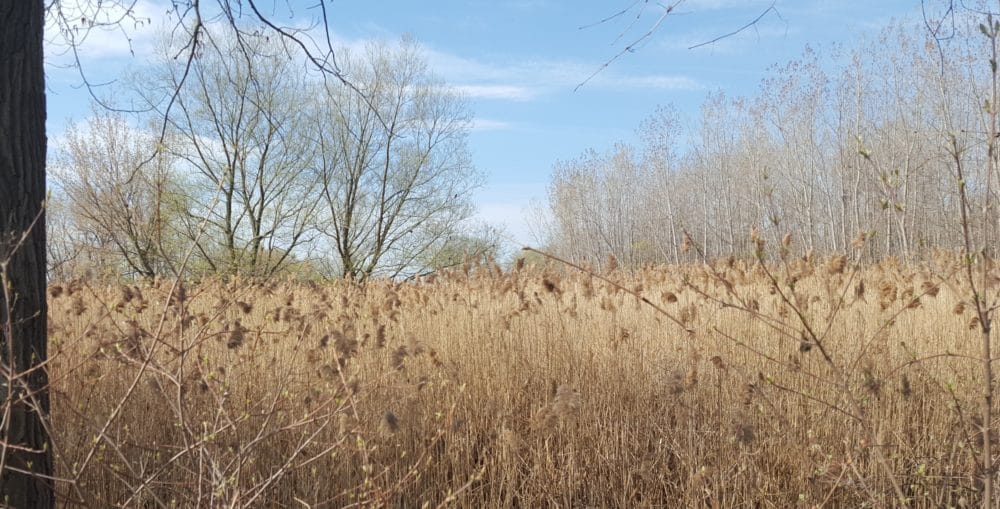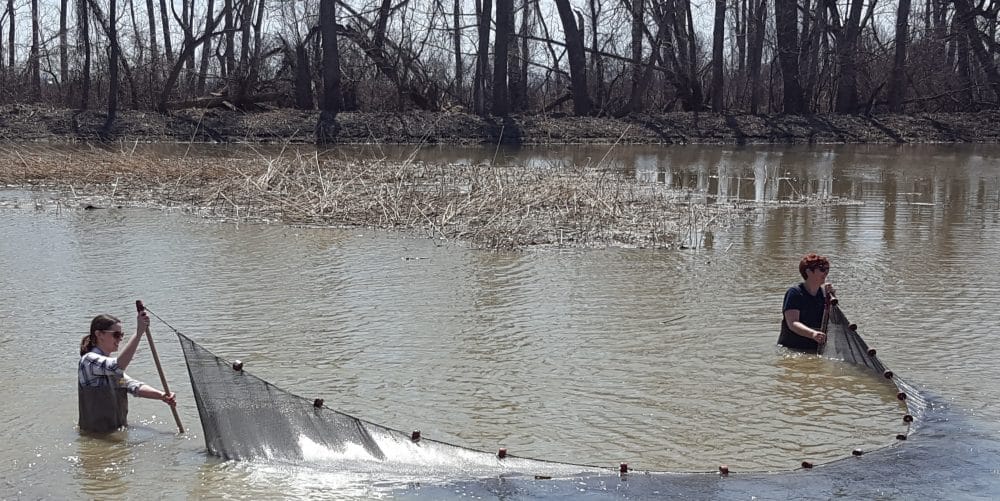Story
October 25, 2018
A rural family in Chatham-Kent steps up to restore a wetland
Funding partners joined forces to restore aquatic habitat in Ontario’s farm country

The Buchanan family has a newly restored wetland on their farm. It isn’t very big but it has a big role to play on the rural landscape near Tilbury, Ont.
Rural landowners can have an outsized impact on ecosystem health and this family is doing their part.
The Buchanan farm is adjacent to the Thames River in Chatham-Kent, a few kilometres upstream of Lake St Clair. There is a wetland on the point of land where Jeannette’s Creek meets the Thames River and, over time, the habitat was choked out by the invasive plant, phragmites.
The restoration included the 6-acre (2.5-hectare) wetland and about six acres of adjoining upland habitat. The newly restored site is thriving and now welcomes waterfowl, fish, turtles and other wildlife.
“Doug and Carolyn saw that the wetland could be more than what it was,” says Darrell Randell, conservation specialist for DUC. “Now there’s so much more wildlife back there.”
Farms in Ontario have a big role to play on the landscape
The Buchanan farm relies on a system of dykes and pumps for drainage, but a breached dyke meant the wetland was not retaining water for years. That allowed the towering phragmites to dominate other vegetation.
DUC worked with the Lower Thames Valley Conservation Authority to remove the invasive species. The wetland was then excavated to recover the ponds and create connecting water channels with a spillway linking the aquatic habitat to Jeannette’s Creek.
“We would like to express our thanks to the people who worked with us and helped make this project a very successful venture,” says Doug Buchanan. “We are excited about the future of the marsh—a dream come true.”
“Doug and Carolyn saw that the wetland could be more than what it was. Now there’s so much more wildlife back there.”
The restoration was carried out with technical expertise from DUC, which also arranged financing with continental, national and local conservation partners.
DUC’s partners in the continental waterfowl community provided nearly 40 per cent of the funds through the Eastern Habitat Joint Venture, part of the North American Waterfowl Management Plan. That contribution was matched by the Government of Canada’s Recreational Fisheries Conservation Partnerships Program. Locally, Stewardship Kent also provided financial support.
“Fisheries and Oceans Canada was proud to contribute almost $25,000 over two years to this restoration project through the Recreational Fisheries Conservation Partnerships program,” says the Hon. Jonathan Wilkinson, Minister of Fisheries, Oceans and the Canadian Coast Guard. “I want to congratulate Ducks Unlimited Canada, the Buchanans, Stewardship Kent and the Lower Thames Valley Conservation Authority on the completion of this project, and thank them all for their continued stewardship of Canada’s aquatic ecosystems.”

A small but mighty restored marsh near Chatham-Kent
- The wetland is located where Jeannette’s Creek meets the Thames River. The project sign can be seen by passing boaters.
- Excavation of the ponds and interconnecting channels, plus the repair of the failed dyke, took place in autumn of 2017.
- The wetland and channels were retaining water and fully flooded by spring of 2018.
- The first fish survey, conducted by the St. Clair Conservation Authority, found many small fish including shiners, bluegill and logperch darter.

Rural wetlands protect waterways like the Thames River
Restoring rural wetlands on private land could be a game-changer for Ontario’s watersheds. Rural wetlands provide habitat for hundreds of plant and animal species while filtering surface run-off, reducing flood surges and supporting climate resiliency. Even more, wetlands help protect waterways like the Thames River by improving overall water quality.
This conservation work could not happen without the vision and collaboration of private landowners like the Buchanan family.
Doug Buchanan and his brother, Bill, managed the farm for more than five decades. In 2016, the brothers were recognized as “consummate soil conservationists and wildlife naturalists” when they were inducted into the Kent Agricultural Hall of Fame. Doug continues to farm with his son and grandsons.
The wetland restoration was long-awaited and brought accolades from the whole family.
“Everybody loves the marsh,” says Carolyn Buchanan.
